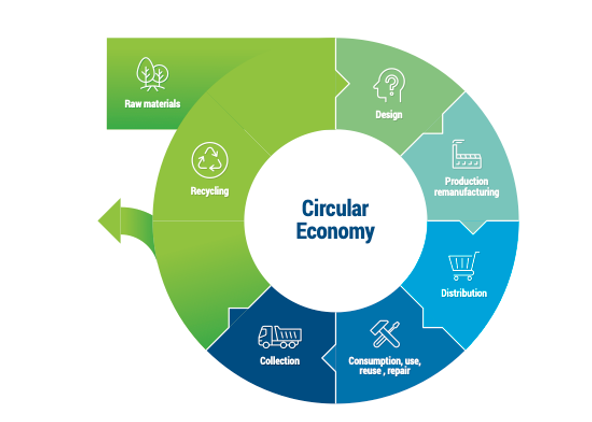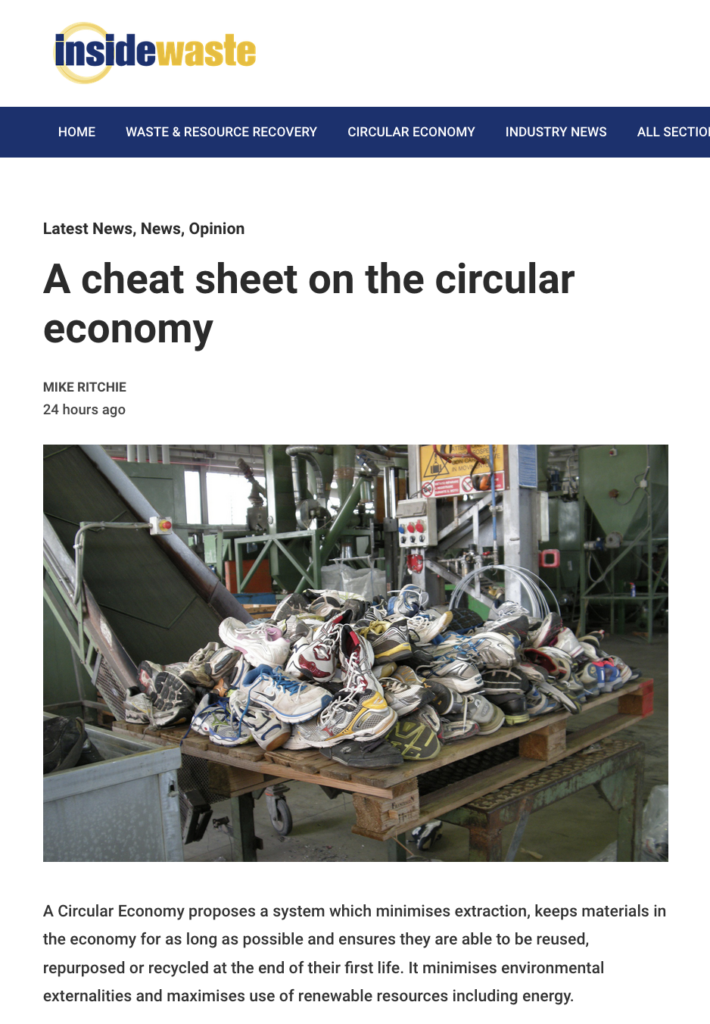MRA’s cheat sheet on the Circular Economy
By: Mike Ritchie, MRA Consulting Group

A Circular Economy proposes a system which minimises extraction, keeps materials in the economy for as long as possible and ensures they are able to be reused, repurposed or recycled at the end of their first life. It minimises environmental externalities and maximises use of renewable resources including energy.
Essentially, it applies the waste hierarchy principles to the whole economy. It’s key premises are: design out waste and pollution, keep products and materials at their highest value/longest use and regenerate natural systems.
MRA is involved in over 300 Circular Economy projects across the country so I thought I should provide the following ovrerview.
How the Circular Economy Intersects with Waste Management and Recycling
Design
At the front end of the economy we need to design for recycling, disassembly, repair at the end of a product’s life. In short, if it cannot be recovered or recycled, you should need an approval to sell it into the economy.
There are no ‘Design for Recycling’ rules in Australia.
Tweet
There are no requirements on manufacturers to ensure a product can be recovered or reused. We have rules for child safety, fire risk, health and safety, country of origin labelling, etc, on all products. But not a single rule for recycling or end of life recovery. Yet.
Purchasing/Supply Chain
- We need to support businesses (and government) to buy products which have end-of-life solutions or include recycled content.
- Governments need to massively increase their purchasing of products with recycled content.
- We need meaningful targets for both recycled content and reuse of materials.
- Policy and education to drive increased usage of recycled content.
- The NSW Bin Trim program offers a methodology to support businesses to review their supply chains and to preferentially purchase recyclable and recycled materials.
Recycling/Reuse
We don’t have the infrastructure and processes to maximise recycling at the end of the economy. Many materials are not Designed for Recycling (with the notable exception of some packaging materials), so the industry does its best. To maximise the recycling and reuse of products we need to:
- Create the economic drivers for investment in processing and recovery of materials.
- Mandate source separation of organics, plastics, metals and fibre.
- Build infrastructure (MRFs) to process mixed waste streams (C&D, C&I, MSW).
- Ban particular streams from landfill.
- Revise the planning schemes to allow recycling facilities to be built.
- Eliminate single use plastic and other problematic streams.
- Expand EPR schemes to make producers of complex material streams responsible for the costs of their recycling (e.g. e-waste).
- Mandate the targets to make them real.

Our goal (Australia’s goal) is to achieve 80% landfill diversion by 2030. Generating opportunities to keep materials circulating in the productive use phase of their life cycle, will be a major part of achieving this.
Tweet
A circular economy will drive the next wave of economic growth, jobs and investment. It is of course obvious. Humanity left the stone age, not because we ran out of stones, but because we innovated and learned. We all know we cannot continue to treat our planet as a tip. We need to innovate and learn.A circular economy makes inherent sense but it will not be achieved without effort.
Mike Ritchie, is the Managing Director at MRA Consulting Group.
This article has been published by the following media outlets:




